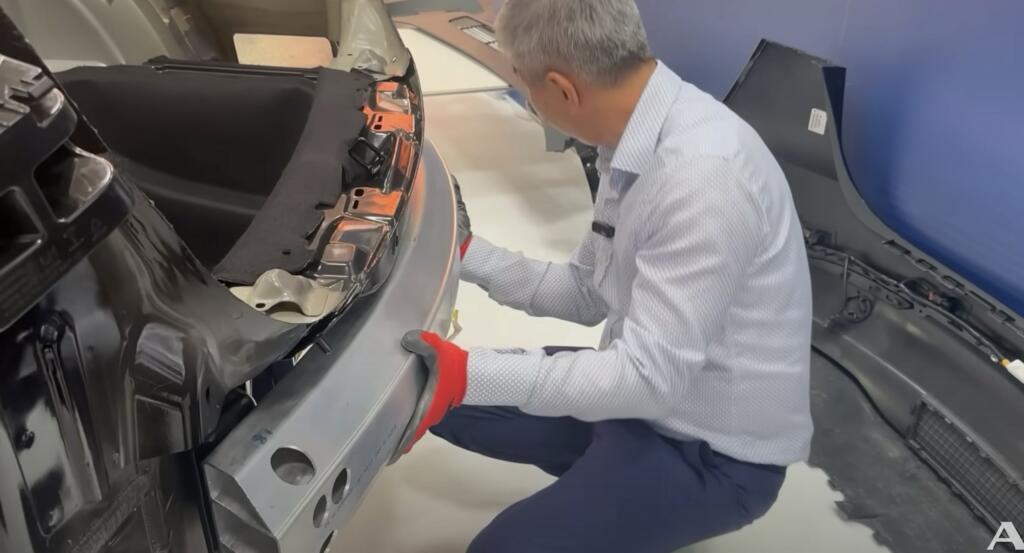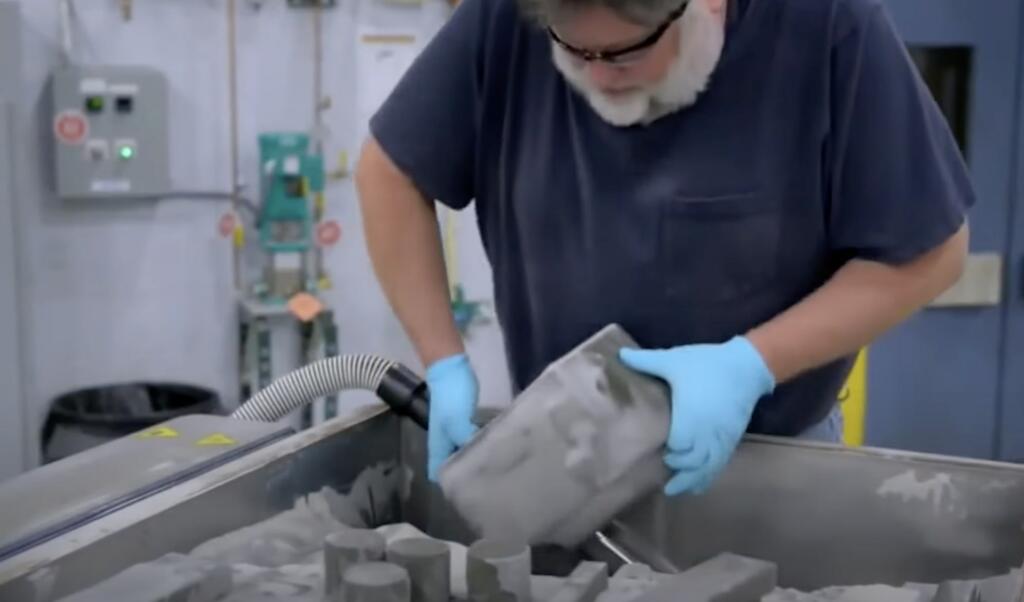Tesla is heading to a few big lego pieces put together by Teslabots in less than one hour. This is the unboxed process and the progression of casting large and complex pieces.
In 2020, the Tesla Model 3 had 10,000 parts and took about ten hours to build from the start of the carbuild in the factory to a finished car driving out. This compares to 30,000 parts for most ICE cars and 14-30 hours to put together. Volkswagen’s internal combustion engine (ICE) cars take between 14 and 18 hours to produce. The electric VW ID.3 takes 30 hours to put together.
Tesla is eliminating about 400 parts for each gigacasting. They have front and rear gigacasting for several of the Model Y. Tesla is developing complex underbody casting from complex 3D printed sand molds, which will then use metal casting. Constant design simplification and three or more major casting pieces can reduce parts to 5000 or less.
Tesla announced the unboxed process where they do not build the car frame and then assemble all of the pieces inside or on the moving car frame. The traditional process is putting together one car from 14,000 to 30,000 parts as fast as possible. The unboxed process is making six or more major sub-modules at the same time. This allows for parallel construction of the 6 or more major modules. Each of the modules could be made from sub-modules for even more parallel construction. There is video showing that Tesla already has many large parts like the bumper and trunk and frunk that just snap together.
Tesla is heading to 5,000 or few parts and more and more casting. This could drop below a thousand parts.
If they put together eight sub modules each with 200-1000 parts in 30 minutes and then snap them together or attach them at the final step, then the whole car could be built in less than one hour.
What will the production capacity of a factory be with such rapid manufactuging. Many section or entire sub-modules would be mostly cast. Other parts could cast together into larger parts. Most of them will be designed to snap together. There is video of how the bumper and trunk snap together already.
Tesla still has the wiring and the battery pack, but the goal is to reduce wiring to 100 meters or less. This is down from 2000-5000 meters of wiring.
Tesla will achieve an insane level of simplicity and manufacturing speed. This will be achieved with gigacasting, 3d printed complex molds, new alloys and completing re-imagining the car building process and constantly reconsidering the need for any part. Lots of technology to make it happen but we are going from 10000 parts to less than 1000 to a few hundred to maybe a few dozens.
As elon’s 5 steps say. Automation is the last step. After eliminating bad requirements and eliminating a LOT of parts.
Details on 3D Printed Sand Moulds and the Unboxed Process
Reuters reports that Tesla has combined a series of innovations to make a technological breakthrough for single casting of the complex underbody of the car. Tesla already can gigacast the front and the rear of its cars. This would mean a further reduction in parts and complexity. This will enable faster and cheaper car production and will reduce the factory space needed for car manufacturing.
Tesla is making progress to snapping together just a few major sub-pieces of the car. They already have front and rear casting which removed ove a thousand parts and hundreds of robots. They will soon cast the complex underbody. A video shows how they already can easily snap together major pieces like the bumper and trunk parts. The goal will be like maybe a few dozen pieces snapping together like giant legos. Those giant legos will be snapped together by humanoid robots.
Tesla will be able to die cast nearly all the complex underbody of an EV in one piece, rather than about 400 parts in a conventional car. The know-how is core to Tesla’s “unboxed” manufacturing strategy unveiled by Chief Executive Musk in March, a linchpin of his plan to churn out tens of millions of cheaper EVs in the coming decade, and still make a profit, the sources said.
The unboxed model involves producing large sub-assemblies of a car at the same time and then snapping them together.
Three major body sections will enable Tesla to develop a car from the ground up in 18 to 24 months, while most carmakers can currently take anywhere from three to four years.
The unboxed process will be very easy to adapt for humanoid robot Teslabot to replace human workers.
Tesla cars already can mostly snap together as shown by Autoline.

3D Printing and Sand
The breakthrough Tesla has made centers on the how the giant molds for such a large part are designed and tested for mass production, and how casts can incorporate hollow subframes with internal ribs to cut weight and boost crashworthiness.
In both cases the innovations, developed by design and casting specialists in Britain, Germany, Japan and the United States, involve 3D printing and industrial sand, the five people said.
To overcome the obstacles, Tesla turned to firms that make test molds out of industrial sand with 3D printers. Using a digital design file, printers known as binder jets deposit a liquid binding agent onto a thin layer of sand and gradually build a mold, layer by layer, that can die cast molten alloys.

The cost of the design validation process with sand casting, even with multiple versions, is minimal – just 3% of doing the same with a metal prototype.
Tesla can make the complex molds with industrial sand and then cast the complex underbody with molten metal alloy.


Brian Wang is a Futurist Thought Leader and a popular Science blogger with 1 million readers per month. His blog Nextbigfuture.com is ranked #1 Science News Blog. It covers many disruptive technology and trends including Space, Robotics, Artificial Intelligence, Medicine, Anti-aging Biotechnology, and Nanotechnology.
Known for identifying cutting edge technologies, he is currently a Co-Founder of a startup and fundraiser for high potential early-stage companies. He is the Head of Research for Allocations for deep technology investments and an Angel Investor at Space Angels.
A frequent speaker at corporations, he has been a TEDx speaker, a Singularity University speaker and guest at numerous interviews for radio and podcasts. He is open to public speaking and advising engagements.


They need to put parts together and doors on the car to paint it. Then they remove them and later on they attach doors again. People go inside the car in the manufacturing process to install some parts. Unboxed method and parallel production eliminates some steps and there is less crawling inside cars and out.
The question I have is repair. How will these vehicles be repaired. Swapping out entire frames?
There is a limit to this. Complex part casting can become very complex too even with the next generation casting..
Definitely diminishing returns at some point but amazing what parts and steps are still getting removed, reduced or streamlined.